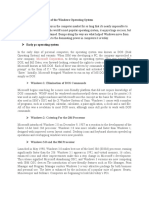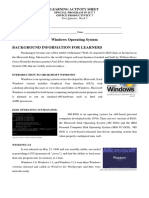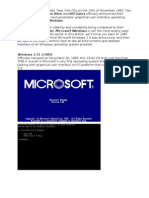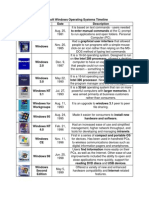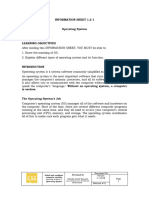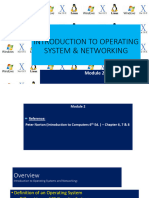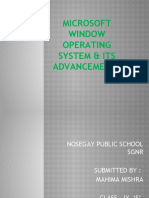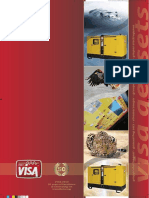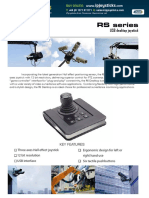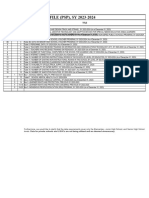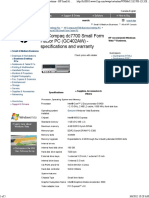0% found this document useful (0 votes)
36 views60 pages3.1. Operating Systems
An operating system (OS) is a set of programs that manage computer hardware and software resources, enabling communication between them. It serves as a resource allocator and control program, ensuring security and efficient execution of user programs. Various types of OS include multi-user, multitasking, and real-time systems, with examples like Microsoft Windows, Linux, UNIX, DOS, and Mac OS X.
Uploaded by
Jay AbaletaCopyright
© © All Rights Reserved
We take content rights seriously. If you suspect this is your content, claim it here.
Available Formats
Download as PPT, PDF, TXT or read online on Scribd
0% found this document useful (0 votes)
36 views60 pages3.1. Operating Systems
An operating system (OS) is a set of programs that manage computer hardware and software resources, enabling communication between them. It serves as a resource allocator and control program, ensuring security and efficient execution of user programs. Various types of OS include multi-user, multitasking, and real-time systems, with examples like Microsoft Windows, Linux, UNIX, DOS, and Mac OS X.
Uploaded by
Jay AbaletaCopyright
© © All Rights Reserved
We take content rights seriously. If you suspect this is your content, claim it here.
Available Formats
Download as PPT, PDF, TXT or read online on Scribd
/ 60

















